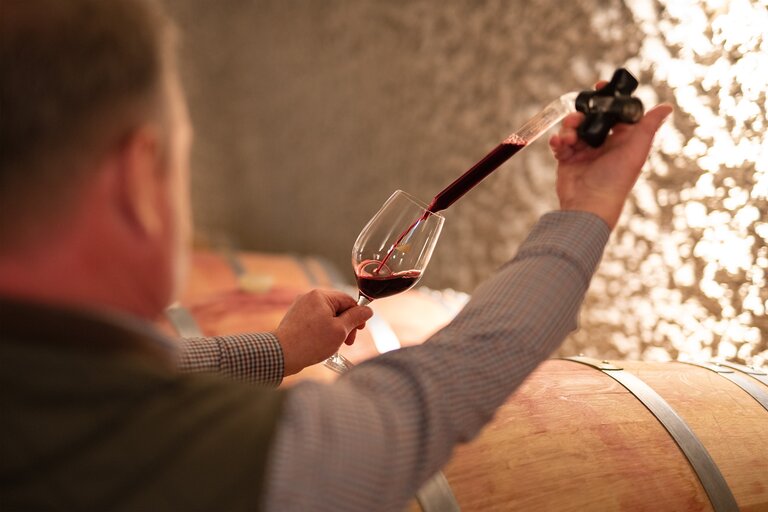The Art of Blending Wine
Field blends were common before DNA profiling allowed growers to correctly identify whether a vineyard was interplanted with two or more different grape varieties.
October 18, 2012

Field blends were common before DNA profiling allowed growers to correctly discern whether a vineyard was interplanted with two or more different grape varieties. Zinfandel often shared ground with petite sirah or carignan, and all the fruit was merrily mixed together in the picking bin for sake of convenience. As finicky winemakers became more concerned with fine-tuning the finished product, however, a closer attention to detail was required. Now, if vineyard managers want to customize their plantings to tailor-fit a patch of soil, they need to purchase cuttings of irrefutable identity from a reputable nursery and, further, select specific clones.
Subtle differences between clones of the same variety arise when cuttings from a “mother” vine (with identical genetic material) are planted in a new site. Mutations inevitably occur, and the vine may naturally adapt to a particular set of growing conditions, so that certain characteristics – such as berry or cluster size, yield, aromas, flavor, and ultimately, quality – differ from the parent vine. When a viticulturist assesses a plot of land for development, they will usually choose several clones in order to increase the likelihood that one of them will be a perfect match to the microclimate. Consequently, even a vineyard designated 100% varietal cabernet can be a blend of clones.
During harvest at JUSTIN, each vineyard block is hand-picked and fermented separately, so that each can be evaluated on its own merit. Each tank is barreled down separately, resulting in more than 100 distinct lots to taste and blend. This inventory tasting is sorted by variety and block. Detailed tasting notes, along with instinctual first impressions, help guide the blending process. Some barrel lots lend themselves to the desired flavor profile of the ISOSCELES Reserve – the darkest, most intense fruit with both power and finesse – while others seem better suited to JUSTIFICATION, with elegant red fruit and complex spice components.
After harvest, I assemble a series of trial blends, each varying slightly. Tasted blind, my favorite then advances to the next round of blending, where minor adjustments are made. With a cooler vintage like 2011, I found myself using more merlot, since it’s an earlier-ripening variety and brings a perceived sweetness and better texture to the midpalate as a result of higher sugars at harvest. Once a final blend is decided on the bench-top, barrels are pumped into tank for cellar-scale blending and then returned to a mix of various coopers’ barrels for 18 to 24 months.
Extensive barrel trials each year ensure we are getting the intended contributions from the oak and toasting regimens. It’s possible to request the same forest, same toast, and same tightness of grain from a dozen coopers and get a dozen different, nuanced barrels. Making a barrel is as much of an art as winemaking. So, even a “finished” blend will exist as separate cooper components. The final bottling blend is not created until the last pump-out, when oak notes of molasses, vanilla, or graham cracker are fully integrated. Ideally, the resulting blend is greater than the sum of all its parts.